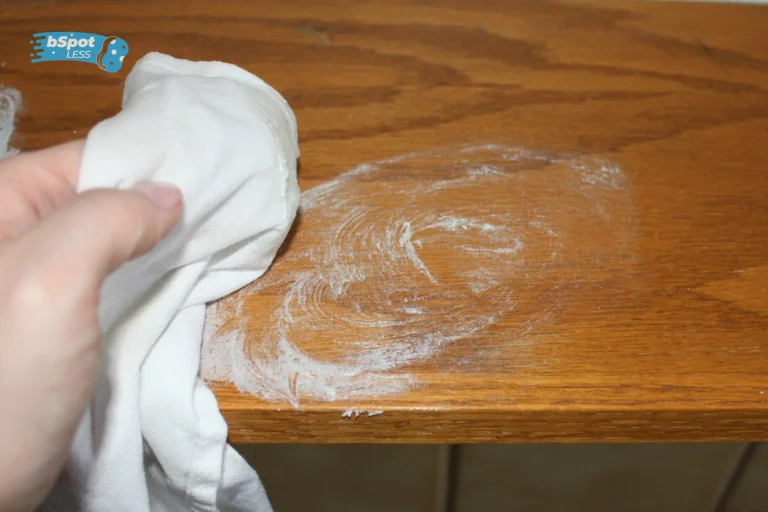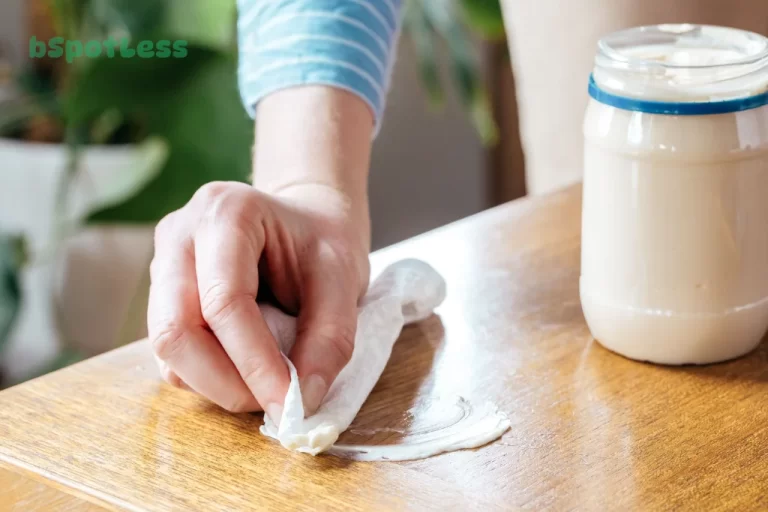Do you have water stains on your hardwood floors? Are you looking for a way to get rid of them without having to hire a professional? Look no further! This blog post will provide you with all the information you need to remove water stains from your hardwood floors. Get ready to make your floor look as good as new!
Identify the Type of Water Stain
Once you have identified the type of water stain, you can determine the best way to remove it. Light water stains are the easiest to remove and can usually be done with a paste made from baking soda and water. For greasy stains, try a mixture of white vinegar and olive oil. For darker stains, mineral spirits may be necessary. If you are unsure of what type of stain you have, it is best to start with gentler cleaning methods before attempting a more aggressive approach.
Clean the Floor
Before beginning any cleaning process, it is important to clean the floor first. This will provide a clean surface and make it easier to remove the water stains. Using a vacuum cleaner, sweep away any dirt and debris from the floor. Then, use a damp cloth or mop to wipe away any dust or dirt that may have been left behind. Make sure to dry the floor after cleaning it, as this will help prevent the water stain from spreading further.
Create a Cleaning Solution
Once you’ve identified the type of water stain, you can move on to creating a cleaning solution. Depending on the severity and type of stain, you can choose from baking soda and water paste, vinegar and olive oil, mineral oil, or pastes for light stains. For greasy stains, apply mineral oils across the floor and for lighter stains, you can use a mixture of white vinegar and an equal amount of olive oil. To remove water stains, the simplest solution is to use a hair dryer set to its lowest setting and direct it at the water stain. You can also use mineral spirits for tougher water stains. Once you’ve identified the best cleaning solution for your hardwood floor, it’s time to move onto the next step.
Test the Cleaning Solution
After creating a cleaning solution, it is important to test it in an inconspicuous area of the floor before applying it to the stained area. This will help ensure that the cleaning solution does not cause any damage or discoloration to the hardwood floor. To test the cleaning solution, apply a small amount of the solution to a corner of the floor and let it sit for a few minutes. If there is any discoloration or damage, then it is best to try another cleaning solution. If there is no discoloration or damage, then the cleaning solution can be applied to the stained area.
Apply the Cleaning Solution

Once you have identified the type of water stain and created a cleaning solution, it is time to apply it to the floor. Put on your rubber gloves and use a clean cloth to spread the solution onto the floor. Make sure you cover the area of the stain completely. Let the cleaning solution sit on the stained area for a few minutes before proceeding to the next step.
Let the Cleaning Solution Sit for a While
Once you have applied the cleaning solution, it’s important to let it sit for a while. This will give the solution time to penetrate and break down any residual dirt or debris. Depending on the type of water stain, you may need to wait anywhere from 10 minutes to 24 hours. If you’re dealing with a light water stain, you can use a paste made of baking soda and water and let it sit for 24 hours. For more difficult stains, try a solution of vinegar and olive oil and let it sit for a couple of hours. Mineral oil can also be used on light water stains to help lift them from the wood surface.
Brush Away the Water Stain with a Soft Brush
Once you have allowed the cleaning solution to sit for a while, it’s time to brush away the water stain. Using a soft brush, gently scrub the surface of the floor in a circular motion. This will help to remove any remaining residue and dirt that may be attached to the stain. When you’re done brushing, make sure to rinse the floor with clean water. This will help to remove any remaining cleaning solution and dirt from the surface of the floor. Finally, use a towel to dry off any remaining moisture on the floor. After you have brushed away the water stain and cleaned and dried the floor, you can then apply a wood polish to bring out the natural shine of your hardwood floors.
Rinse the Floor with Clean Water
After letting the cleaning solution sit and brushing away the water stain with a soft brush, it is important to rinse the floor with clean water. This will ensure that no residue is left behind and that all of the dirt and grime is washed away. Additionally, it will help to prevent any further staining or discoloration of the wood. Simply use a damp cloth or mop to wipe away any remaining product from the floor. Be sure to rinse thoroughly and be careful not to leave any cleaning solution behind. Once the floor is completely rinsed, use a dry towel or cloth to dry it off.
Dry the Floor with a Towel
Once the cleaning solution has sat for a while, you can use a soft brush to brush away the water stain. Be careful not to scratch the floor, and make sure to rinse the area with clean water afterwards. After rinsing, use a clean towel to dry the floor and remove any remaining moisture. This will help to prevent any further staining or discoloration that may be caused by the moisture. Once the floor is dry, you can add a furniture polish or wax to restore shine and protect the wood from future damage.
Polish the Floor
Once you have removed the water stain, it is important to polish the floor to restore its shine and protect it from further damage. To do this, use a furniture polish and spread it evenly across the entire floor. Let the polish sit for a few minutes before buffing it with a clean, dry microfiber cloth. This will help to bring back the natural sheen of your hardwood floor and protect it from future damage.

